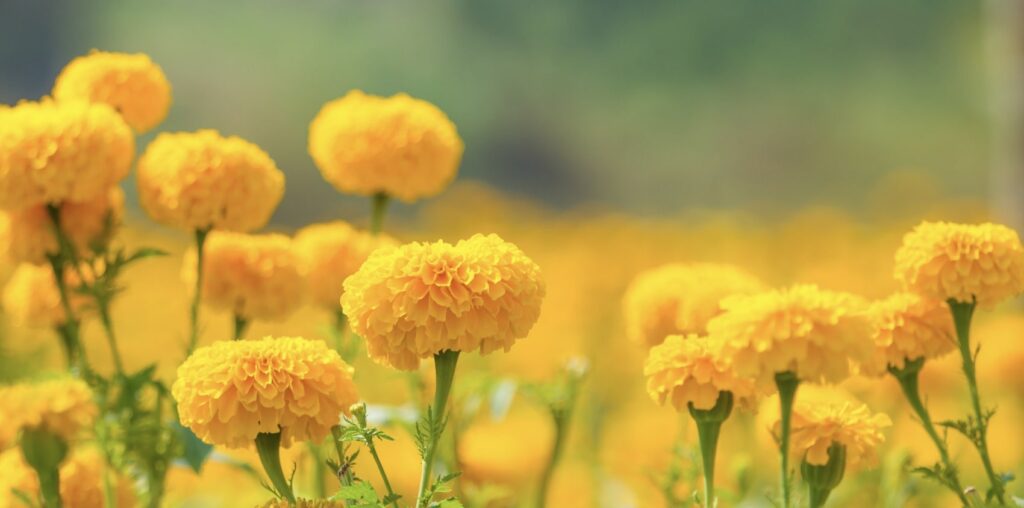Marigolds are vibrant, orange-yellow, carnation-shaped flowers. If you’re curious about this lively blossom, read this guide which will discuss
- How you can use them as a gift for a close friend, family member, or mentor
- Their traditional and modern uses
- Their significance as one of the October birth flowers
- Why they’re called the “flower of the dead”
What is the meaning of marigold?


Because of its bedazzling orange or gold color, the marigold stands for the sun—its power and its benefits. Thus, the cheerful flower means energy, power, strength, and light.
Why are marigolds associated with death?
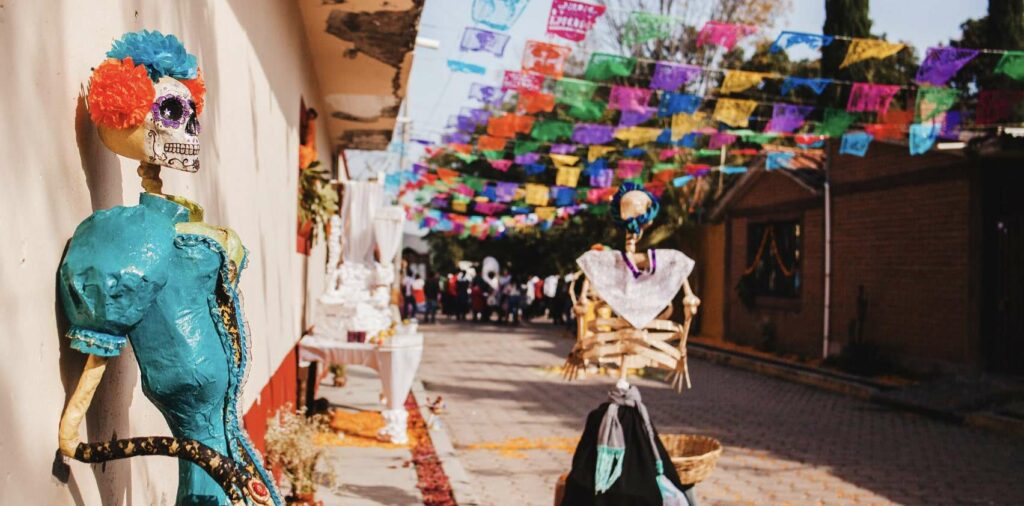

In Mexico and California, the marigold is a famous flower used during Día de los Muertos or the Day of the Dead festival.
This happens each year on November 1 and 2 when people visit the graves of deceased relatives or friends to honor their lives.
Marigolds may be offered as a single flower or may be arranged in a simple or grand fashion, like a flower arch. During the festival, the flower’s powerful musky odor permeates the cemeteries and churches.
At this event, many men wear skeleton face paints stylized differently, ponchos, and hats, and women also mostly put on the paint and wear white gowns, flower hats, and flower crowns.
What did the Aztecs call marigolds?
The Aztecs, who were a Central Mexican tribe in the post-classical period (1300–1521), called marigolds “cempasúchil.” They believed that the scent of marigolds guided and led dead people back to their homes.
The celebration of Día de los Muertos extends back to these ancient people, and although it’s called the Day of the Dead, it’s not always sad and reminiscent.
It can be a celebration too, as it’s believed that this is when departed loved ones visit the land of the living again.
Marigold as the October Birth Flower
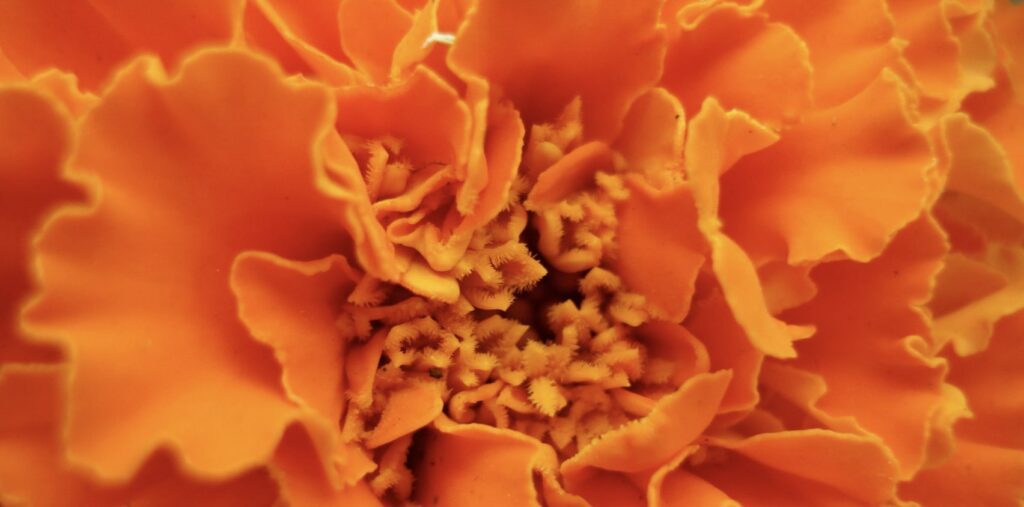

Along with the cosmos, one special birth flower of October is the marigold.
It’s easy to see why. These flowers bloom during the fall season, which includes October.
Marigold as a birth flower means great love, creativity, and dedication. The latter meaning is inspired by the fact that marigolds dedicatedly persist through the cold temperatures of fall.
The first two meanings, love and creativity, are inspired by their warm color.
Marigolds in Culture and History
Let’s now explore the cultural significance of marigolds in different cultures:
Marigolds in America
Between 1861 and 1865, America had a civil war fought between the Union or the North and the Confederacy or the South.
During this time, marigold was largely relied upon in order to staunch the bleeding of wounded soldiers and help them recover.
Marigolds in England
Marigolds and Shakespeare
William Shakespeare wrote the play A Winter’s Tale, which was published in 1623. Here’s an excerpt of it with the marigold flower:
Here’s flowers for you;
Hot lavender, mints, savoury, marjoram;
The marigold, that goes to bed wi’ the sun
And with him rises weeping: these are flowers
Of middle summer, and I think they are given
To men of middle age.
In this verse, it’s suggested that the flower reminds one of the setting sun and is fitting for middle-aged men.
Marigold Charm for Luck and Protection
Centuries ago, Europeans wore a marigold charm with a wolf’s tooth and bay leaves.
It was said that they gave the wearer good luck, fortune, and protection from piercing words and evil spirits.
In addition, the marigold flower was used to treat some of the symptoms brought by the Bubonic Plague, a deadly epidemic that struck Europe in 1347.
Marigolds in India


To Indians, the marigold flower symbolizes creativity, passion, and lasting happiness.
That is why it is an iconic flower used for a variety of purposes during Hindu wedding events. The beautiful composite flowers bring joy and optimism to the newlyweds.
Also, marigolds here are made into a garland called a torana and hung above the door or in religious places. Its forceful odor keeps irritating insects at bay.
Marigolds in Mexico
The marigold had been a sacred flower to the Mayans and the Aztecs. Its brew was rubbed on the body of Mayan priests before they contacted the spirits from beyond.
The flower was also offered to honor deities and deceased people. In relation to this, it’s an important symbol of the Dia de los Muertos or the Day of the Dead in Mexico.
Its pungent odor is said to create a path for spirits to follow so that they can find their way back to their homes and families whom they were with when they were still alive.
Where does the name “marigold” come from?
Marigold was coined in the middle of the 12th and 15th centuries merging the word Mary, as in the Virgin Mary, and gold. In this context, the word can be read as “Mary’s gold.”
The reason for this is it was believed that the flower was placed on Christian church altars as an offering to Mary instead of coins.
Another plausible and simpler explanation is that the name was given to the flower because it’s believed that Mary wore the magnificent golden blossoms in her hair.
What do marigolds represent spiritually?
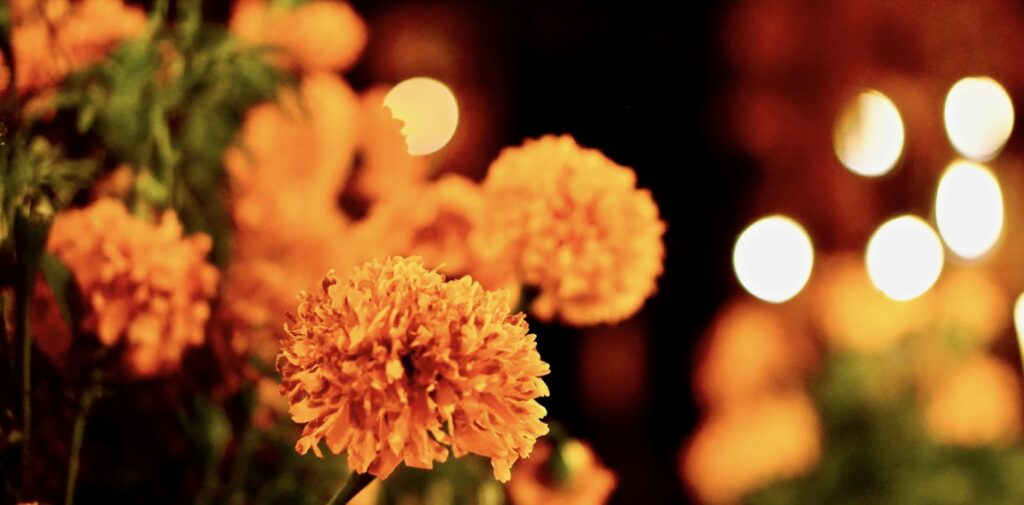

Marigolds mean differently in various religions:
- In Buddhism, they mean bliss.
- In Christianity, they mean compassion.
- In Hinduism, they mean faith in the gods.
Marigolds in Buddhism
Lots of Buddhist worshippers leave marigolds in the temple near the Buddha. It shows that the person is thankful and respectful to him and the supernatural figures there.
The marigold is also beautifully symbolic of bliss, peace, calmness, and a healthy and pure mind, body, and soul.
By following Buddhist doctrines, Buddhism practitioners can achieve these invaluable internal things, which are perfectly suggested by the flower’s sun-like form.
Marigolds in Christianity
Because these flowers are named after and are used to honor Mary, marigolds mean beauty in simplicity and compassion. These are aspirational traits the mother of Jesus is said to have.
What do marigolds symbolize in Hinduism?
Marigolds are an important flower in Hinduism. They can be commonly found adorning temples, gardens, and rituals.
They are offered to different Hindu gods and goddesses to appease, say thanks to, or honor them.
In Hinduism, the flower has favorable meanings of faith and trust that the gods will help the individual conquer their problems and protect their family.
The orange and yellow marigolds, in particular, signify the willingness to surrender to the lord and live according to his will, which is always good and just for everyone.
Marigold General Information
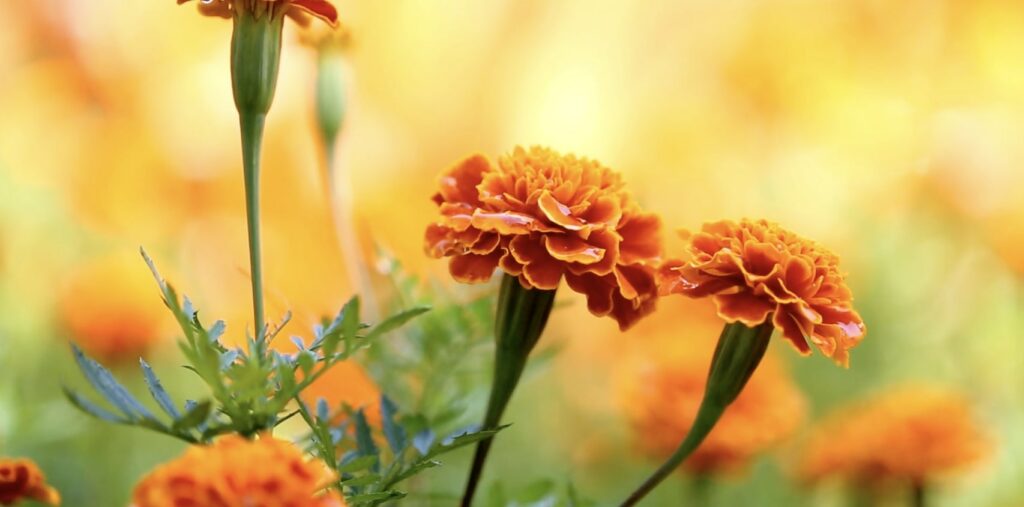

Genus: Tagetes
Family: Asteraceae
Plant type: Annual herb
Blooming period: Early summer to late fall
Native habitat: North and South America
Suitable as: Cut, garden, border, and container plants
Marigold is a stunning annual plant that blooms from early summer to late fall. It is native to wet and dry or tropical environments in North and South America.
It belongs to the genus Tagetes, consisting of about 50 species of the aster family (Asteraceae).
It can be grown indoors in a pot during the winter or outdoors in the ground under warm and moist conditions.
Most people grow them in their houses as garden and container plants. They are definitely great to be paired with roses, lavender, allium, and geranium, among other summer bloomers for a lively and colorful appeal.
They’re also striking as cut vase flowers and special event bouquets that can brighten the day of those who behold them.
What does a marigold look like?
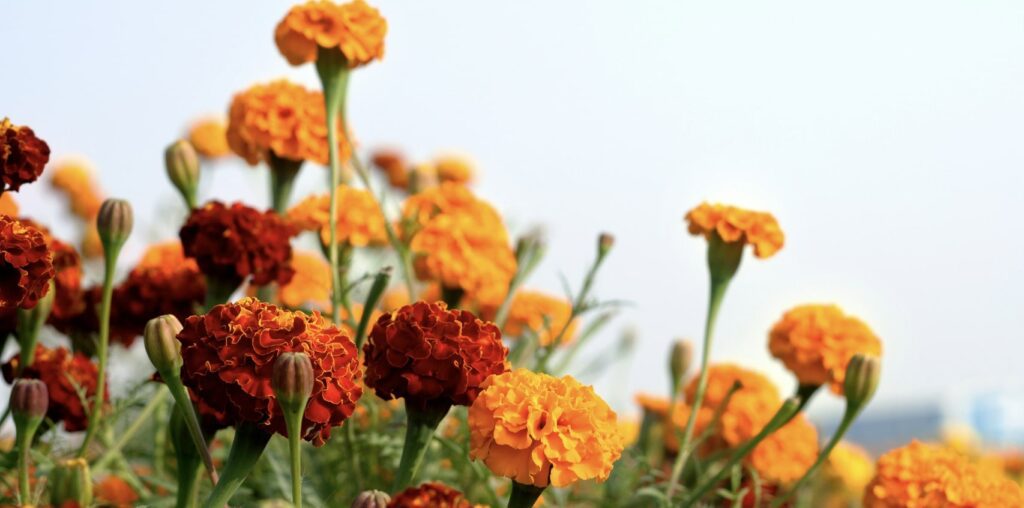

Marigold comes in orange, gold, red, green, and yellow shades. It can produce a single or cluster of flowers from a single stem, much like hydrangeas.
Below each of the flowerheads are bracts or leaf-like organs which function to attract pollinators as well as protect them from pests and environmental conditions.
Its small, fine-cut, and light-green leaves can be bent or upright and are arranged opposite each other. They are not bushy and tightly packed.
They emit an intoxicating musk (a blend of earthy, foresty, and animalistic scents) which is one of the things that make them well-known. Some people find this odor pleasant, while some don’t.
Depending on the cultivar, marigolds can grow from 6 inches to 3 feet in height and 6 inches to 2 feet wide.
They require full sun, evenly moist soil, and regular watering to thrive. Once established, they become hardy to hot weather, drought, and insects, so taking care of them becomes a walk in the park.
What is the occasion for gifting marigolds?


You can gift marigolds
- to cheer up a struggling or sick friend,
- for a cheerful person,
- and as a housewarming gift.
Marigolds for a Struggling or Sick Friend
Being a symbol of radiance, joy, hope, and light, it would be nice to give it to a friend who is struggling in his personal life or his work or one who is recovering in the hospital.
Marigolds for a Supportive and Cheerful Person
But you can surely give the marigold bouquet to a person at any kind of event. They’re perfect for anyone who has been supportive of you and has a bright personality, like the sun which the flowers symbolize.
Marigolds as a Housewarming Gift
Marigolds are a great housewarming gift as well. Besides, they are believed to invite good luck, joy, and positive thoughts into the home with their golden aura reminding us of the sun.
You will likely find it hard to find marigolds from florists. But with any luck, you will find one with common or different varieties of marigolds.
What is the traditional use of the marigold?


The marigold has been used as a traditional remedy for a variety of skin conditions.
Some examples of this are bruises, inflammations, and varicose veins which the flower can effectively treat. It can also alleviate and heal mild or severe cases of eczema and sunburn.
And rather than manually preserving and mixing the flower with olive oil and wax, you can find great ready-to-use marigold-based ointments sold in drug stores or certain groceries.
What is the modern use of the marigold?


The modern uses of the marigold flower are
- Ornamental plant
- Food coloring
- Insecticide
Marigold as an Ornamental plant
Many gardeners love to grow marigolds, as they produce amazing flame-colored blooms. They provide the house an eye-catching appeal throughout the summer and autumn.
Smaller marigolds are fantastic to grow low in the ground in borders, while taller ones can be planted along other fall flowers and in large, stylish pots and planters.
Marigold as Food Coloring
According to this research from the Central Food Technological Research Institute, orange and yellow marigolds contain a carotenoid pigment. This pigment also has lutein, which benefits eye health and has anti-cancer and antiaging properties.
The flower has been used in animal food, but for human consumption, more studies need to be conducted to verify the marigold flower extract’s efficacy and safety.
Can marigold repel insects?
Marigold’s strong aroma makes it a natural insect repellant. However, not all marigold species can carry out this function nor for all kinds of pests.
Older and stronger-smelling marigolds are said to be better at keeping harmful pests at bay from themselves or nearby vegetable or food crops.
FAQs about the Marigold Flower
